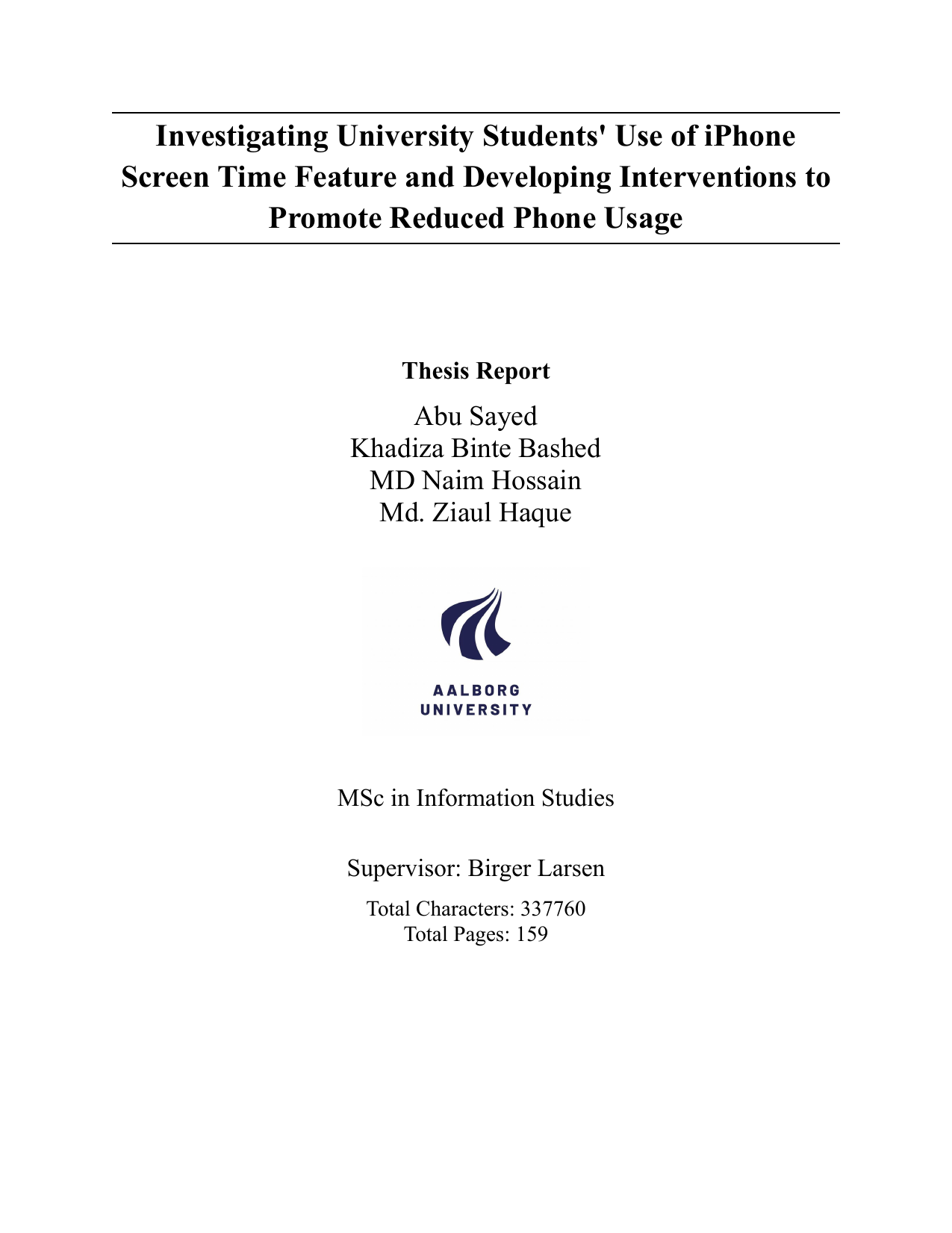
Investigating University Students' Use of iPhone Screen Time Feature and Developing Interventions to Promote Reduced Phone Usage
Authors
Term
4. term
Publication year
2025
Submitted on
2025-01-06
Pages
189
Abstract
This study investigates how university students employ the Apple’s Screen Time feature to respond to difficulties associated with high smartphone usage, which have been found to have negative effects on the mental, physical, and social wellbeing of users. Carrying out the mixed-methods research approach, the study uses heuristic evaluation, surveys, interviews, and contextual enquiries to evaluate the effectiveness and usability of the iPhone’s Screen Time tools. Findings reveal significant disengagement among users and limited feature engagement, highlighting gaps in design interventions to promote digital well-being and self-regulation. The research also indicates deficiencies in design interventions to address digital well-being and self-regulation needs: aspects such as gamification and personal persuasive technologies can be improved in future research. In the context of this work, the following theoretical frameworks have also been embraced: self-determination theory, Fogg’s behaviour model, and selected human-computer interaction guidelines to support a design thinking approach towards building user-orientated solutions. The recommendations for how to incorporate design changes to enhance the usefulness of the Screen Time feature are to add behavioural prompts as well as aesthetically appealing graphic interfaces for effectiveness and for practice of maintaining sustainable, healthier habits and higher levels of digital awareness. By offering guidelines for creating user-centric tools that foster constructive smartphone use, this work contributes to the theoretical and practical discourse on digital well-being.
Keywords
Documents
